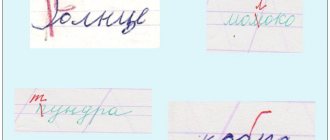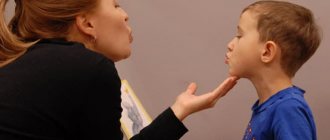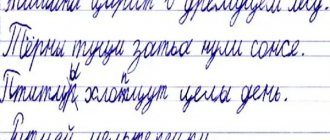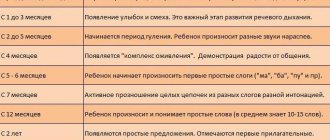Impaired written speech in adults most often occurs as a result of damage to higher mental functions.
The causes are primarily associated with head injuries, brain surgeries, severe infections, strokes, as well as oxygen deprivation of brain cells. Dysgraphia develops against the background of cognitive disorders, memory, easy distractibility, decreased performance, temporal and spatial disorientation, and difficult social conditions. Handwriting becomes uneven, a person, even having a good command of the rules of the language, cannot apply them, gets confused in writing letters, is unable to arrange words in the right order, and writes very slowly.
Whatever the cause of dysgraphia and whatever degree it manifests itself, correction of the disorder must begin in advance, as soon as problems with written speech appear.
How is dysgraphia corrected?
Treatment of dysgraphia is always comprehensive and is aimed primarily at normalizing the processes of analysis and synthesis of written elements - from individual letters to entire sentences. If you just correct mistakes and work through school books with grammar exercises, there won’t be much use. Each exercise in the correction program should be aimed at strengthening connections between brain structures and the formation of new, correct skills:
- production of problematic sounds;
- expansion of vocabulary;
- mastering grammatical structure;
- improving the coherence of oral speech, analytical abilities, and listening comprehension.
How to study on your own?
Below we present several exercises recommended by experts for independent implementation. For some tasks you will need an assistant. It is important to exercise every day for at least one to one and a half hours. If circumstances do not allow, exercise for at least 20-30 minutes. Regular exercise is an important condition for improving brain activity.
Remember words and terms
The exercise is aimed at mastering the graphic appearance of the word. It is necessary to break words and terms into individual syllables in advance. They are written down randomly on a piece of paper or on cards. Task: correctly connect the parts of each word. Visual cues can be used to improve understanding.
Word puzzles
Various rebuses, crosswords, fillwords and other puzzles, where you need to enter a specific word letter by letter or find it among others, are good for remembering the graphic appearance of the word and its meaning. Memory and attention are involved, the processes of analysis and synthesis of information are activated. You should start with simple tasks and words, gradually complicating them.
Buzzing Reading
When writing words, pronounce each letter: K-O-R-O-V-A, M-O-L-O-K-O, etc. Spelling pronunciation helps you remember the graphic appearance of a word faster.
Music and sports activities
Physical education and musical exercises require the coordinated work of several parts of the brain at once, helping to strengthen interhemispheric connections and improve fine and gross motor skills. Buy a simple musical instrument that uses both hands, such as a harp, and learn at least a few simple melodies. Make it a rule to do gymnastics every morning, this will bring undoubted benefits.
Prevention of agrammatic dysgraphia in preschoolers with ODD through didactic games
Kulikova Daria Yulievna
Prevention of agrammatic dysgraphia in preschoolers with ODD through didactic games
Relevance of the topic.
One of the main directions of modernization of education is to ensure state guarantees of accessibility and equal opportunities for children with general speech underdevelopment to receive a full education. Based on this, it follows that children with speech development disorders should be provided with special conditions for upbringing and education. By developing the speech and mental abilities of children with disabilities, the teacher facilitates the transition of this category of children not to specialized correctional schools, but to mass educational institutions.
Work on improving the grammatical aspect of speech, as the main factor in readiness for school.
Normally, children's acquisition of the grammatical structure of speech occurs gradually, through imitation.
Grammatical structure is a system of interaction of words with each other in phrases and sentences. There are morphological and syntactic levels of the grammatical system. The morphological level presupposes the ability to master the techniques of inflection and word formation, the syntactic level presupposes the ability to compose sentences and combine words into sentences in a grammatically correct manner.
One of the main stages in the formation of grammatically correct speech is the work to prevent dysgraphia in preschoolers, since research by educational psychologists shows that in preschoolers with general speech underdevelopment (GSD), the formation of all components of the speech system is complexly impaired, namely: sound pronunciation, sound-syllable structure of words , phonemic processes, language analysis and synthesis, unformed monologue coherent speech, lexico-grammatical structure of speech, visual gnosis, optical-spatial praxis, memory, attention, motor function, thinking; there is underdevelopment of cognitive activity, and accordingly speech and non-speech skills are not formed prerequisites for mastering writing. An analysis of the errors and difficulties that children with general speech underdevelopment encounter when learning to write shows the role and importance of dysgraphia prevention.
Considering all of the above, we can consider the topic of the work “Prevention of dysgraphia in preschool children with general speech underdevelopment” to be extremely relevant and timely.
Let's consider agrammatic dysgraphia as one of the common types in children with general speech underdevelopment.
Characteristics of agrammatic dysgraphia. The agrammatic form of dysgraphia appears in children due to general speech impediment. It is based on the child’s immaturity of the grammatical structure of oral speech. It can manifest itself at the level of words, phrases, sentences and text. This is expressed in inaccurate use of words, incorrect spelling of endings, inability to coordinate words in a sentence, and incorrect use of prepositions.
Typical errors. Typical errors in oral speech in preschoolers can be:
•distortion of the morphological structure of the word, replacement of prefixes, suffixes (overwhelmed - “overwhelmed”, goats - “little goats”);
•change of case endings (“many trees”);
•violation of prepositional constructions (above the table - “on the table”);
•change in the case of pronouns (about him - “about him”);
•change in the number of nouns (“the children are running”);
•violation of agreement (“white house”);
•violation of the syntactic format of speech (difficulty constructing complex sentences, omissions of sentence members, violation of the sequence of words in a sentence).
In the future, these errors appear in children's writing at school.
In coherent written speech, schoolchildren show great difficulties in establishing logical and linguistic connections between sentences. The sequence of sentences does not always correspond to the sequence of events described; semantic and grammatical connections between individual sentences are broken.
To prevent this, it is necessary to form the grammatical structure of speech in the preschool period. And the sooner the better.
The main directions of work to eliminate the prerequisites for agrammatic dysgraphia.
To form the grammatical structure of speech in preschool children with general speech underdevelopment, the following work is carried out:
1. Work on inflection:
- formation of the plural of nouns;
- agreement of adjectives with nouns;
- agreement of nouns with numerals.
2. Work on word formation:
- formation of nouns using diminutive suffixes;
- formation of verbs using prefixes;
- formation of relative adjectives;
- formation of possessive adjectives;
- formation of names of baby animals;
- selection of words with the same root.
3. Work on prepositions (understanding and using prepositions, making sentences based on pictures, series of pictures, distributing and shortening sentences).
4. Enrichment of vocabulary and development of practical ability to use it.
5. Work on the proposal.
6. Development of coherent speech. Work is underway to teach how to compose descriptive stories and improve the skills of retelling short texts.
Methods and techniques in the prevention of agrammatic dysgraphia.
An important point in the prevention of dysgraphia and preparing children with ODD for school is the choice of teaching methods. The most effective method is the use of didactic games as one of the forms of educational influence of an adult on a child and at the same time the main activity of a preschooler.
Based on my practical experience as a speech therapist in a preschool educational institution, it can be noted that in all areas of correctional and educational activities to eliminate deficiencies in oral speech, didactic games must be present as the main method of preventing possible subsequent deviations in the development of written speech.
Practical significance allows us to establish a relationship between the initial stages of education (the speech group of kindergarten and school) and optimize work on the prevention of dysgraphia.
In this regard, I have developed, modernized and differentiated didactic games to overcome speech disorders and prevent agrammatic dysgraphia in children with general speech underdevelopment.
Didactic games aimed at eliminating the prerequisites for agrammatic dysgraphia.
1. “One-many” (goal: formation of the plural of beings in
Name and Give birth. cases) you can use pictures or play by throwing a ball;
2. “Help me count” (goal: agreement of nouns with the numerals 1, 2, and 5) you can use pictures or play by throwing a ball;
3. “Who hid behind the tree?” (goal: formation of possessive adjectives on the topic - “Wild Animals”) playing on a flannelgraph;
4. “Who hid behind the fence?” (goal: formation of possessive adjectives on the topic - “Pets”) playing on a flannelgraph;
5. “Who hid in the jungle? (goal: formation of possessive adjectives on the topic - “Animals of hot countries”) playing on a flannelgraph;
6. “Tails” (goal: formation of possessive adjectives on the topic - “Wild Animals”);
7. Playwomen N. In Nishchevoy (No. 1, No. 2, No. 3);
8. “Help the cook” (goal: formation of relative adjectives on the topics - “Fruits”, “Berry”, “Vegetables”);
9. “The Magic Train” (goal: formation of words using the suffix - ICA) (sugar bowl, bread bowl, pepper shaker, etc.)
10. “Help mom find the baby” or “Gather the family” (goal: to form names of baby animals, birds) pictures or layouts;
11. “Call it affectionately” (goal: formation of a diminutive suffix of nouns on all lexical topics";
12. “What are we made of” (goal: formation of relative adjectives) glass-glass glass, metal-metal pan, etc.
13. “Small, big, huge” (goal: formation of words using the suffix - LOOKING, -LOOKING) cat - cat - cat...
14. “Stories in pictures” part 1, part 2 (goal: compiling a story based on a series of pictures related in meaning);
15. “Little words” (goal: correct use of prepositions);
16. “New words” (formation of new words using prefixes);
17. “Which one? Which? Which? Which?" (goal: agreement of adjectives with nouns in gender, number);
18. “To whom will I give what?” (goal: formation of nouns in the dative case on the topic - “Tools”) I’ll give the cook (what) - a ladle...
19. “Professions” or “Who works what?” (goal: formation of nouns of the Instrumental case) The carpenter works (with) a plane...
Working on a proposal.
Work on the proposal is carried out according to the following plan: 1. Two-part sentences, including nouns in Im. p. and verb of the 3rd person present tense (the tree grows).
2. Common sentences of 3-4 words (The girl washes the doll. The girl irons the dress.)
It is useful to work on distributing sentences using words denoting the attribute of an object: Grandmother gives her granddaughter a ribbon. — Grandmother gives her granddaughter a red ribbon. -The grandmother gives her granddaughter a long red ribbon.
When constructing sentences, it is useful to create graphic diagrams that help symbolize objects and the relationships between them.
Types of tasks:
1. Drawing up a proposal based on the picture, and a diagram is laid out under the picture.
2. Selection of proposals for this graphic diagram; record them under the appropriate diagram.
3. Independently come up with proposals based on this graphic scheme.
4. From two proposals, choose the one that fits the proposed scheme. The formation of the function of inflection and word formation is carried out both in oral and written speech.
Didactic games should be based on the following principles:
•didactic game should be based on program material;
• a didactic game should promote the involvement of, first of all, more intact analyzers (visual and tactile) in the correction process;
• aids used by a speech therapist or teacher when conducting didactic games must be visually attractive;
• the conditions of the game and the number of aids used in it must ensure the involvement of all children in the correction process.
When conducting games, it is necessary to preserve all structural elements, since it is with their help that didactic tasks are solved. The didactic game is part of a holistic pedagogical process, combined and interconnected with other forms of teaching and upbringing.
Practical experience consists in classifying and differentiating didactic games as a means of preventing dysgraphia with the specified category of children.





